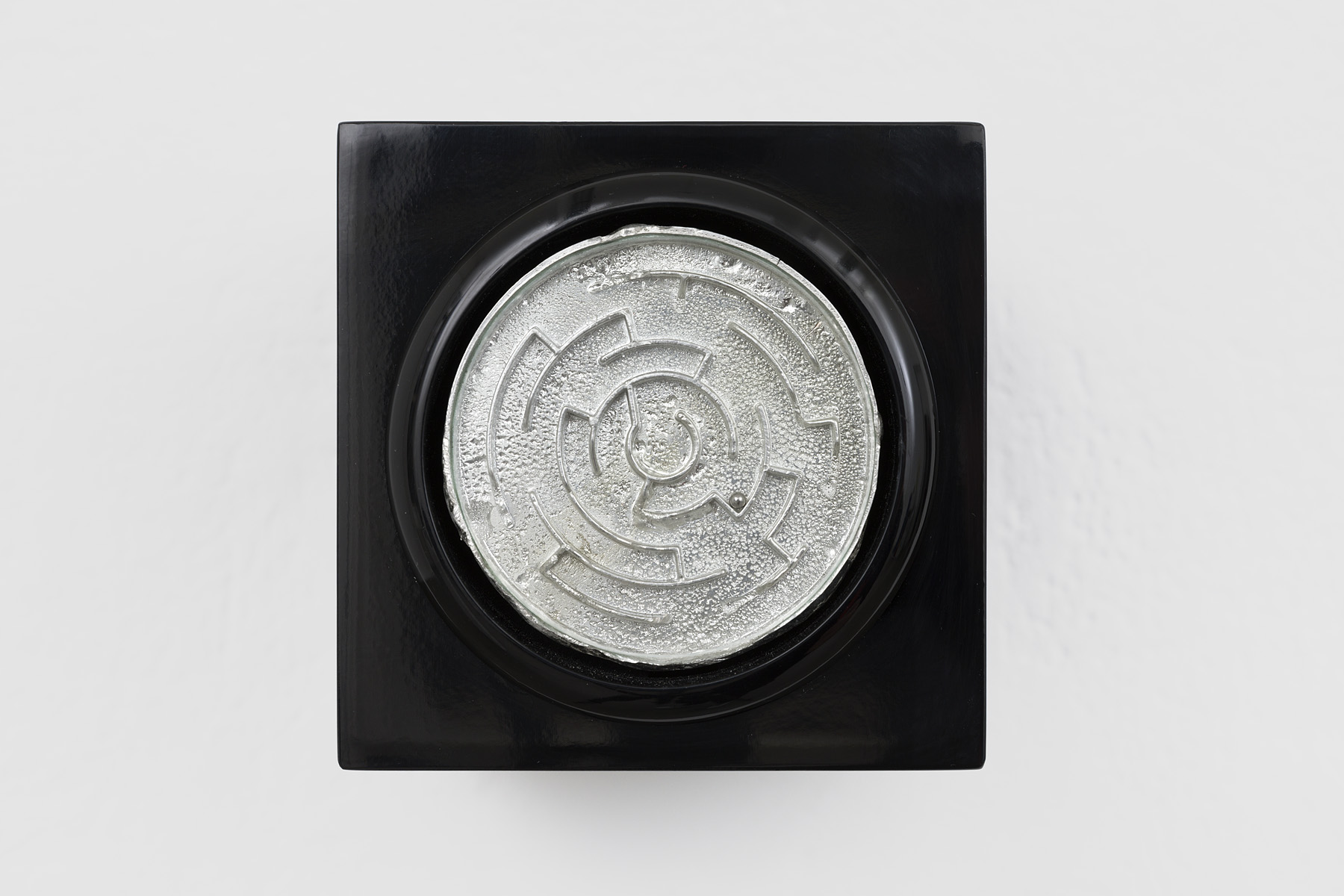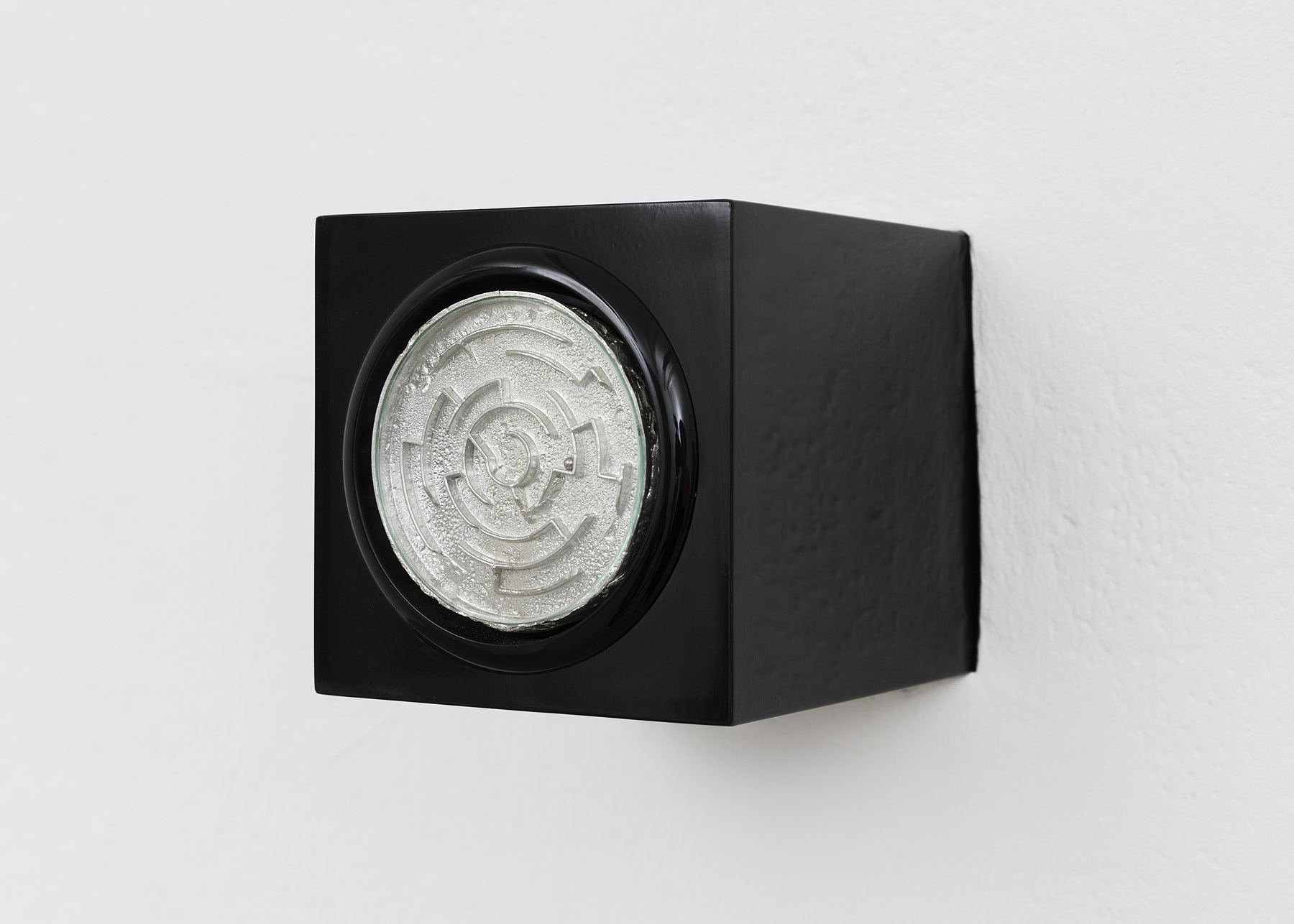Emmilou Roessling
Work
Info
Dates
Work
Portrait Landscape Reclining Figure
Schemes of an Hour
The Longest Sentence*
Untitled (I-III)
Day Sculptures
15th of September 2022
The Planets
Copernicus Drift
Spheres
Wrapped Paintings
The Fraternity
Fluff
Water Cooler Chat
Cascade
Press
Info
Dates



The Longest Sentence*, 2024
Hacked Watch winder, tin casted labyrinth, steel ball, glass and velcro
11 x 11 x 16cm
The Longest Sentence* is a black cube slotted into the wall. A small tin casted labyrinth is mounted onto the object, inside a steel ball is held in place by a small glass pane. The labyrinth is constantly being brought into rotation by the cube. In order to produce this rotation, the sculpture makes use of a watch winder, a mechanical device which keeps watches in motion for when they are not being worn on the owner's wrist. A device like this can be necessary for automatic watches, since these have got a small spring inside that needs to be kept taut. The spring in a watch that never moves will become too soft or loose and the watch will start telling time slower.
The electronics inside are hacked and re-programmed using a so microcontroller, setting a randomised pattern of movement of rotation and short moments of stillness in between. Kept in motion by the watch winder, the steel ball, like a Sisyphean figure, relentlessly moves in circles approaching the centre; yet once it reaches the target and centre of gravity of its concentric journey, it is granted no rest and no sense of arrival.
The motion of the sculpture creates a hypnotic swirl which influences the beholders’ vision in such a way that any other object they might be perceiving next will be perceived as slightly turning. Or that even in the short pauses of its rotating movement the sculpture refuses to be perceived as standing still.